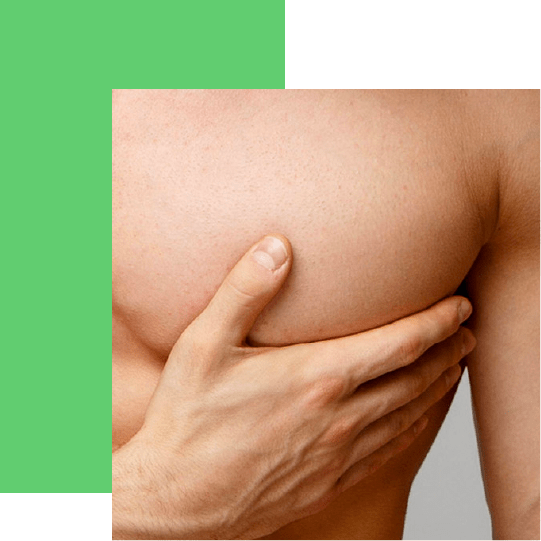
Gynecomastia in Turkey
Gynecomastia surgery, or male breast reduction surgery, is a plastic surgery type for treating gynecomastia – a condition of excessively large breasts in men. It is done by removing breast fat, tissue, and skin and improving the chest contours’ appearance.
Gynecomastia procedure
Gynecomastia surgery can take from two to five hours and is performed under general anesthesia or intravenous sedation.
The procedure is performed either by making small incisions through which the excess fat is removed by liposuction or, if required, by making longer incisions and removing the fat along with excess skin and tissue by excision. It is also possible to combine the two techniques. The method chosen for your surgery will depend on your particular condition and preference and should be agreed upon during your consultation appointment.
Patient profile
Patients with gynecomastia seek gynecomastia surgery – a condition of excessively large breasts in men caused by hormonal changes, genetics, obesity, or certain drugs.
You should be healthy, at a stable weight, and ideally not using any drugs and a nonsmoker in order to have gynecomastia surgery.
Consultation
During gynecomastia surgery consultations, the following is discussed: surgical goals; medical history; substances used currently, including medications, supplements, alcohol, drugs, and tobacco; current health status; the expected outcome; postoperative care and potential complications.
Your surgeon might perform examinations to define the cause of your condition. The size and shape of the breasts are measured and examined as well as the nipples and surrounding skin. Photographs are taken and options for the gynecomastia surgery are discussed, after which the surgeon recommends an appropriate course of treatment.
It is advised to make full use of the consultation appointment in order to make as informed of a decision as possible. It is essential for the surgery’s success to honestly answer all of the surgeon’s inquiries and openly ask about anything requiring clarification.
Before The Surgery
The following may be requested from you before having your gynecomastia surgery:
• Getting tests for health evaluation
• Avoiding nicotine
• Avoiding aspirin, anti-inflammatory drugs and herbal supplements
• Taking specific medications or adjusting current medication
Postoperative care & recovery
After gynecomastia surgery, the chest is covered with gauze and bandages as the incisions heal. Thin tubes might be placed under the skin for draining any build-up of excess blood or fluids. You are instructed on what medication to use for healing and how to take care of the chest area during your recovery. A follow-up appointment is arranged.
The skin in the incision area should always be handled gently without exposure to any abrasive motion. Any form of physical strain should be avoided for at least a month after gynecomastia surgery.
About one to two weeks are needed in most cases to return to normal activities. However, you should expect to be able to see the final results of your gynecomastia surgery only after external and internal healing is complete and the swelling and bruising go down entirely, which might take three to six months. The scars remaining after the surgery are permanent but fade over time and are sometimes hidden in the natural breast contours.
It is advised to make inquires with your surgeon concerning the period immediately after the surgery and during recovery. You may have questions about where you will be placed after the surgery, what medications you will be given, and when to arrange an appointment for follow-up care.







